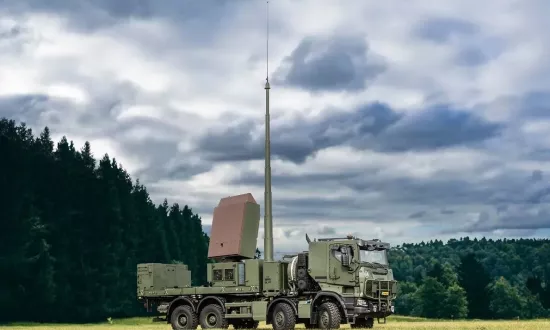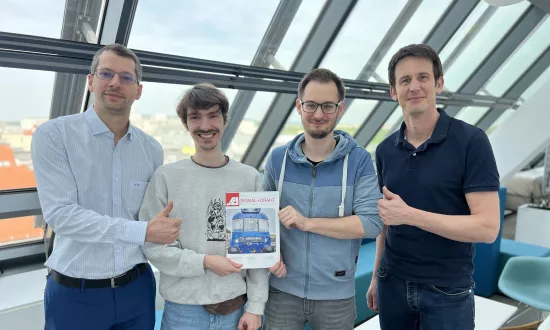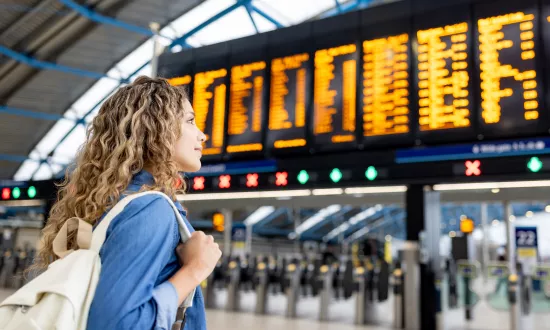Harnessing the potential of drone swarms
What were you doing in the first few minutes of 2023? You may well have been one of the millions who watched London’s firework display, and that choreographed display of 400 drones, dancing into formations including the late Queen Elizabeth and King Charles III.
Large numbers of drones working together like this are known as a swarm. As shown on New Year’s Eve, they can create something almost magical. But their potential goes way beyond entertainment. They can do anything from search and rescue to herding animals. From delivering parcels to boosting wi-fi signals in remote locations. Even catching criminals.
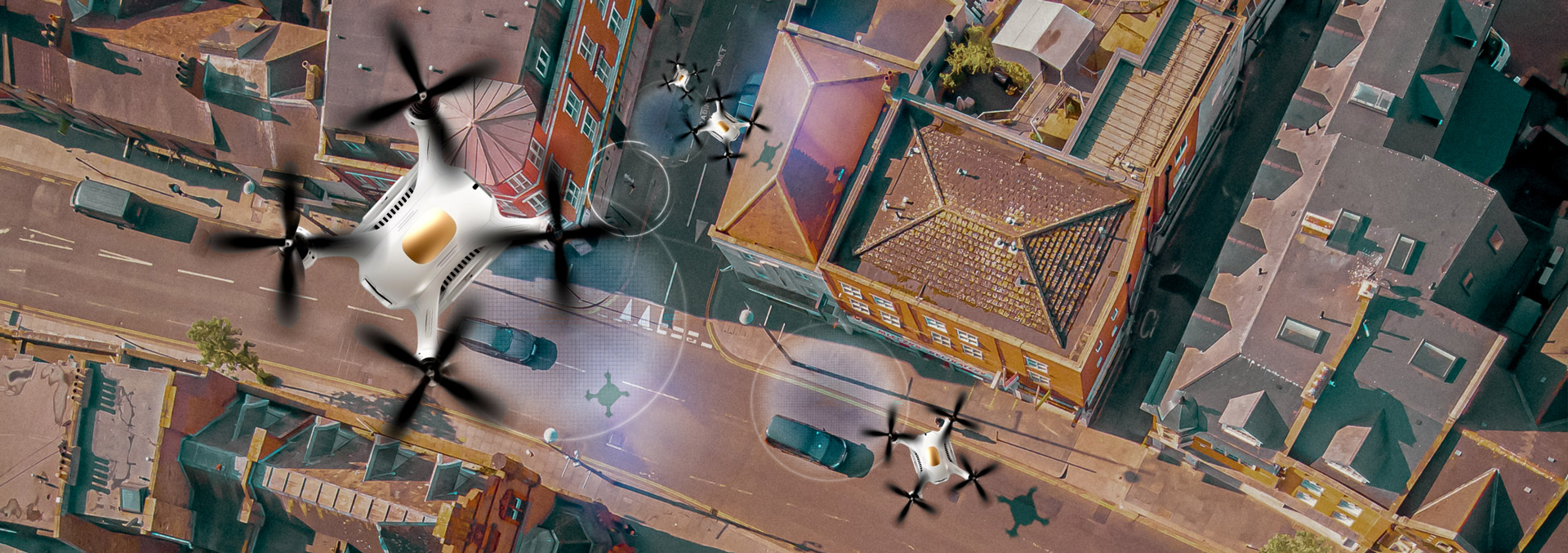
Drones on the beat
We know that policing budgets are under strain. So just think of the possibilities if you could use a swarm to help catch a criminal on the run. Let’s imagine it’s a man; he’s wearing black clothes; he’s within a certain geographical area. We’ve got a photo, but the quality isn’t great. So let’s send in the drones.
What we’re trying to do is eliminate as many people as possible from our enquiries. Somebody wearing blue? No. A woman? No. Some children? No. What about the dogs? No. The drones zero in, building a picture of the area, until they’ve eliminated all but ten people. But they can’t identify which one of these ten is the criminal because they can’t get a camera close enough.
We don’t want to give the game away just yet. So we send in tiny cameras to see if they can get facial recognition. The drones work together to get into position, get a good picture and identify the right person. They eliminate another five suspects, but we still need to narrow it down. We have to do something else in order to flush the right person out.
Let’s make it obvious that we’re looking. If one of these five people starts running, the situation changes. Commands from the central hub, which could be human-led or autonomous, say to grow the swarm. So we multiply our efforts until we’re sure we’ve got the right suspect.
The swarm reconfigures and a squad of drones follows the runner. They’re avoiding obstacles – humans, buildings, street furniture and cars. Using map reading abilities and determining his intent autonomously, the drones predict his route. They get ahead, to the sides, above and behind him: they’re there at every turn.
‘The drones work together to get into position, get a good picture and identify the right person. They eliminate another five suspects. Now we want to flush him out.’
At junctions, drones position themselves on all possible routes, never losing sight of the suspect. This is essential. Part of the swarm must always maintain contact, so we have what is called 100% track confidence. If the drone footage is ever needed in court, we need to show any ‘handovers’ from multiple perspectives, so it’s clear there are no breaks in recording.
Now back to our chase. The criminal changes tack and goes into a building; the autonomous processes kick in again. One or more drones look through the windows to try and spot him; perhaps they use infrared cameras to detect a heat signature. Others stay on standby, ready for the next phase. And what are the means of escape? Let’s reposition the swarm around all the exits so that we can keep tabs on him.
Officers on the street stay involved, ready to confirm the suspect’s identity and make an arrest. Working alongside the drones means they have been able to follow exactly what’s been going on the whole time – and at a fraction of the price of mobilising helicopters or extra officers. And once the job’s done, the swarm reconfigures and either comes back to base or goes off to do another job.
The continuous data that the drones are gathering – the initial detection, the following, the vectoring of the arresting force – will be available for use by the prosecution later.
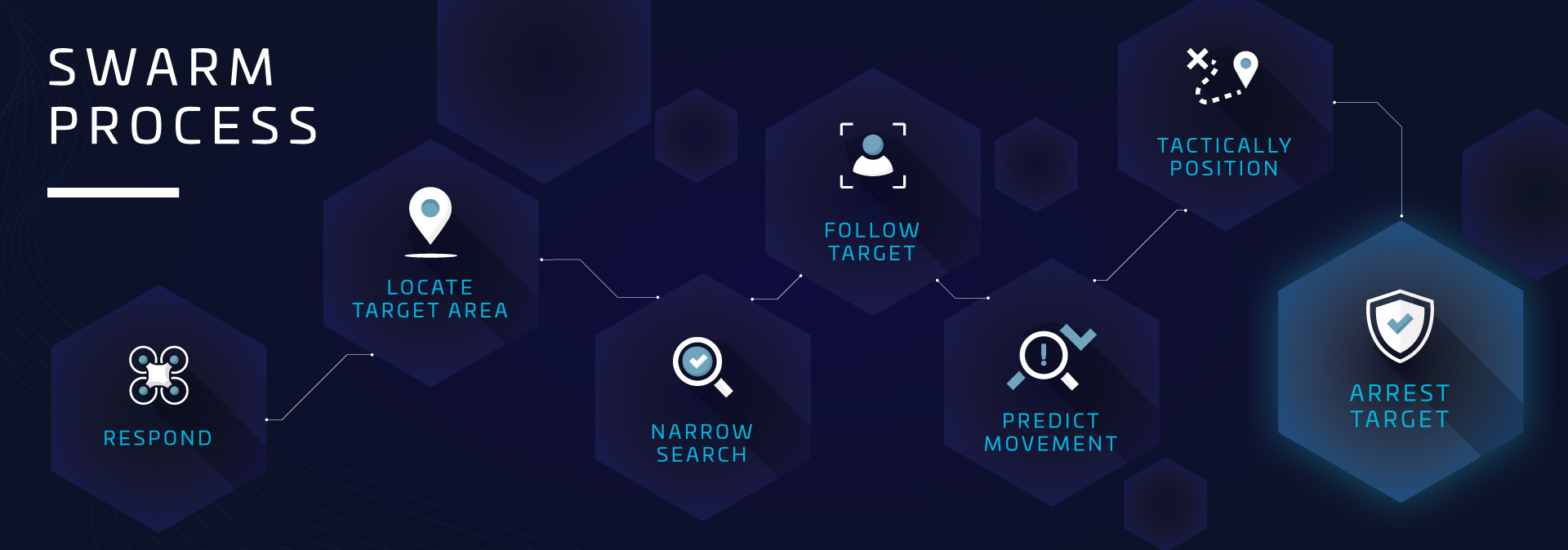
The power of autonomy
Drones work autonomously, which means they can use data to make their own decisions without direct control by humans. Sound scary? It’s not. In fact, you’re probably already using it.
Think about your sat nav. What happens when you go against its instructions? Not a lot – it simply recalculates and gives you another option. It autonomously works out that you’ve taken a different turn, or passed that junction, but it knows the end result you’re after and it finds a new course to get you there.
Drones work autonomously, which means they can use data to make their own decisions without direct control by humans. Sound scary? It’s not. In fact, you’re probably already using it.
The autonomy of drones is very similar. The overall policy, goals and constraints remain under human control and are adjustable in real time. The drones combine these human-led rules with data from a variety of sensors: cameras, infrared or radar. They also use data from other sources, such as human intelligence (HUMINT) perhaps gathered by the police, and open-source intelligence (OSINT) which is publicly available on the internet and social media. They’ll have the technology to process all this data autonomously. Then they use what they’ve learned, and the ability to detect other drones and communicate with each other, to complete their task.
Of course, many tasks will be subject to change as they unfold. The autonomy means that each individual drone can make its decisions based on its own situation, the position of the swarm as a whole, and a host of external factors.
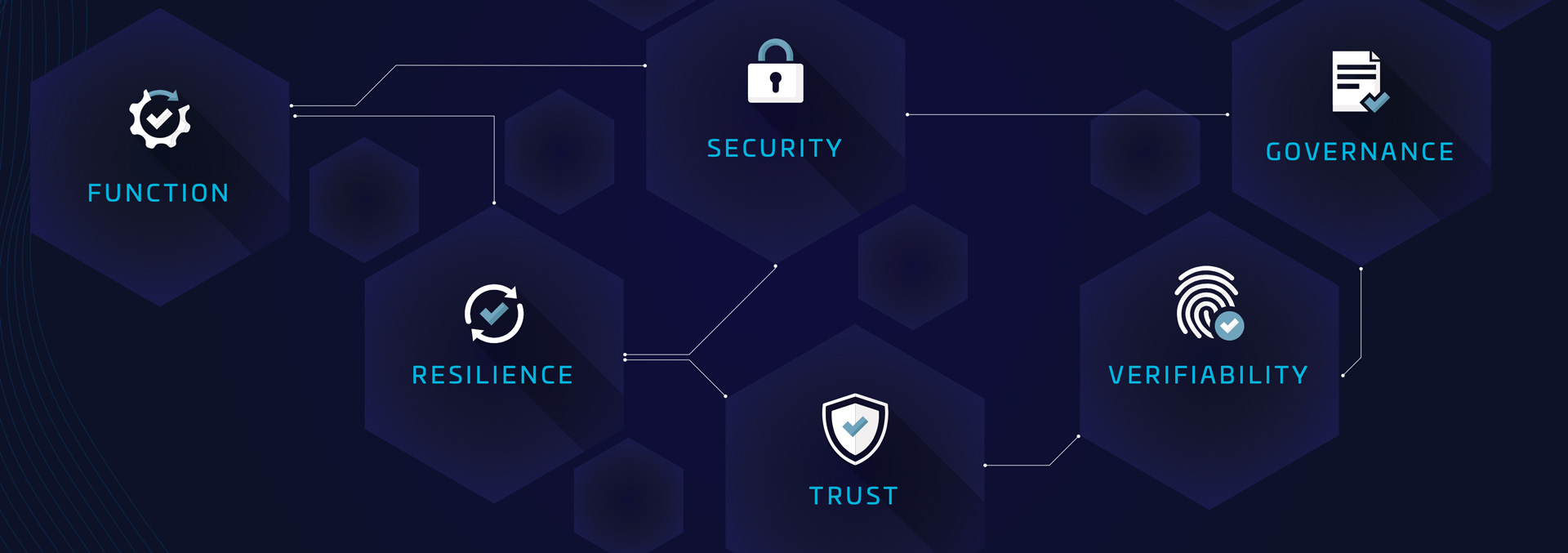
How Thales supports the safe use of drones
It is scenarios like these that Thales is helping become a reality. But the journey to get there involves grappling with and solving some fundamental challenges.
We deal with safety and mission-critical systems, which really matter to individual people, communities, countries and even the whole world. Using these systems to support autonomy requires substantial collaboration, government policy preparation and public engagement.
That’s why we’ve been working with the Trustworthy Autonomous Systems (TAS) Hub. As part of this collaborative research effort, we’re addressing six key research components – Verifiability, Functionality, Governance and Regulation, Resilience, Security and Trust – which underpin our work in the development of all autonomous technology.
The ultimate aim is to develop trustworthy autonomous systems that will benefit and be trusted by individuals, government and society as a whole. So that one day, the use of drones will be creative, responsible and a welcomed part of everyday life.
